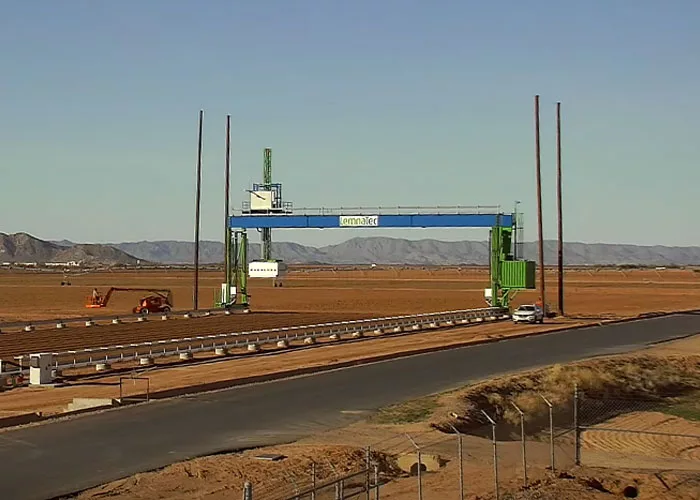A revolutionary new agricultural robotics system has been installed on 1.5 acres of cultivated land at the University of Arizona Maricopa Agricultural Center, as part of the Advanced Research Projects Agency-Energy, or ARPA-E, Transportation Energy Resources from Renewable Agriculture, or TERRA, program. The ARPA-E TERRA program is facilitating the improvement of advanced biofuel crops, specifically energy sorghum.
The scanalyzer to be demonstrated is the largest field crop analytics robot in the world, incorporating cameras and sensors that measure and record crop growth and development with unprecedented resolution.
The UA's role is to generate and channel extremely large data sets that capture the dynamics of plant growth and response to ambient conditions in the low desert under their natural environment.
The event is hosted by the UA College of Agriculture and Life Sciences and the U.S. Department of Energy's Advanced Research Projects Agency-Energy. ARPA-E director Ellen Williams and Ann Bartuska, deputy undersecretary of the U.S. Department of Agriculture, will be on hand.
What: Demonstration of a scanalyzer, the largest crop analytics robot in the world
When: 8:30 to 10:30 a.m. Thursday, June 2
Where: University of Arizona Maricopa Agricultural Center, 37860 W. Smith-Enke Road, Maricopa, Arizona
The UA will be represented by Kimberly Andrews Espy, senior vice president for research; and Shane Burgess, vice president for agriculture, life and veterinary sciences, and Cooperative Extension, dean of the College of Agriculture and Life Sciences, and director of the Arizona Experiment Station.



![[Technology Corner] A Big Step Forward for Interoperability & Data Sharing](https://www.precisionfarmingdealer.com/ext/resources/2025/12/12/A-Big-Step-Forward-for-Interoperability--Data-Sharing.webp?height=290&t=1765565632&width=400)


